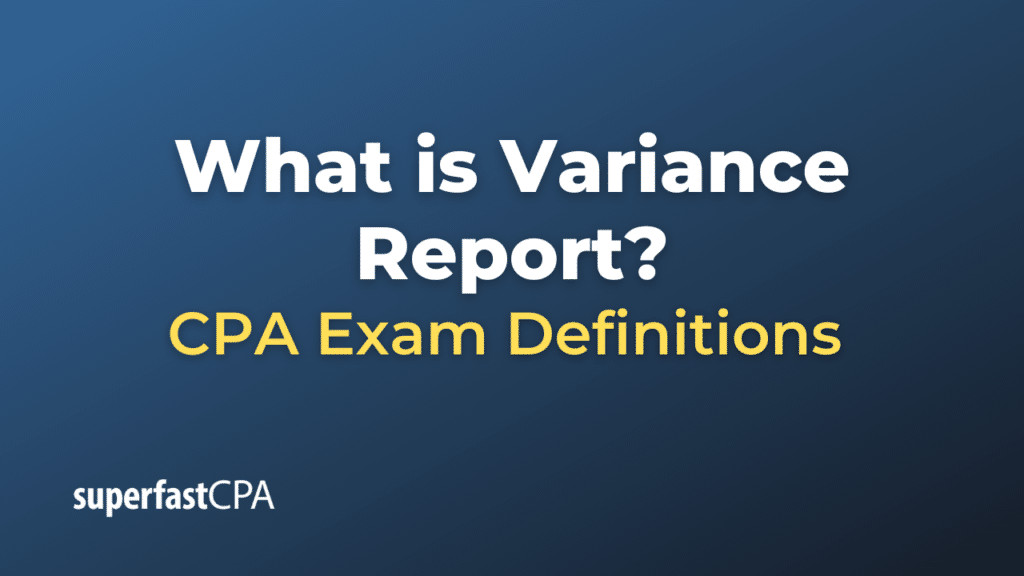Variance Report
A variance report is a document that compares actual performance against planned or budgeted performance in various aspects of a business, such as revenues, expenses, production, and key performance indicators (KPIs). This report is a crucial tool for managers to understand deviations from the plan and identify areas where corrective action may be needed.
Variance reports can cover different timeframes (monthly, quarterly, annually) and can be specific to different departments or functions within an organization. They often include both numerical data and explanatory text to provide a comprehensive view of performance.
Key Components:
- Budgeted Figures: These are the planned or projected numbers, often based on past performance and expected future conditions.
- Actual Figures: These are the real numbers that are recorded after the fact.
- Variance: The difference between the budgeted and actual figures, often expressed both in raw numbers and as a percentage.
- Explanation: Context or commentary about why a variance occurred. This might include external factors, internal errors, or other insights into the performance gap.
- Corrective Actions: Recommended steps to correct unfavorable variances or to capitalize on favorable ones.
Types of Variances:
- Favorable Variance: When the actual performance is better than the planned performance. For example, if you budgeted $10,000 for monthly expenses and only spent $9,000, you have a favorable variance of $1,000.
- Unfavorable Variance: When the actual performance is worse than planned. For instance, if you budgeted $10,000 in monthly revenue but only made $8,000, you have an unfavorable variance of $2,000.
Example of Variance Report
Below is a simplified example of a variance report for a small retail business for the month of January. The report focuses on three key areas: Revenue, Expenses, and Profit.
January Variance Report
Revenue
- Budgeted: $50,000
- Actual: $40,000
- Variance: -$10,000
- Percentage Variance: -20% (Unfavorable)
Expenses
- Budgeted: $30,000
- Actual: $28,000
- Variance: $2,000
- Percentage Variance: 6.67% (Favorable)
Profit
- Budgeted: $20,000 (Revenue – Expenses)
- Actual: $12,000 (Revenue – Expenses)
- Variance: -$8,000
- Percentage Variance: -40% (Unfavorable)
Explanations and Action Plan
Revenue
- Explanation: Foot traffic was lower than expected, perhaps due to unusually cold weather. A planned marketing campaign also did not yield the expected increase in sales.
- Action Plan: Launch a new, targeted digital marketing campaign and offer limited-time promotions to boost sales.
Expenses
- Explanation: Lower than expected utility costs and a bulk discount from a supplier resulted in lower overall expenses.
- Action Plan: Reinvest some of the saved money into marketing initiatives aimed at improving revenue.
Profit
- Explanation : Profit was lower primarily due to the revenue shortfall.
- Action Plan: Increase advertising and review inventory to focus on higher-margin items to improve profits.
In this example, the variance report provides a clear comparison between budgeted and actual figures for the month. The unfavorable revenue and profit variances are of concern, and the business plans to take specific actions to improve these numbers.
The favorable variance in expenses offers a bit of a silver lining and provides some additional funds that could be reinvested to address the shortfall in revenue.
A variance report like this enables management to understand performance gaps and take proactive steps to correct them.













